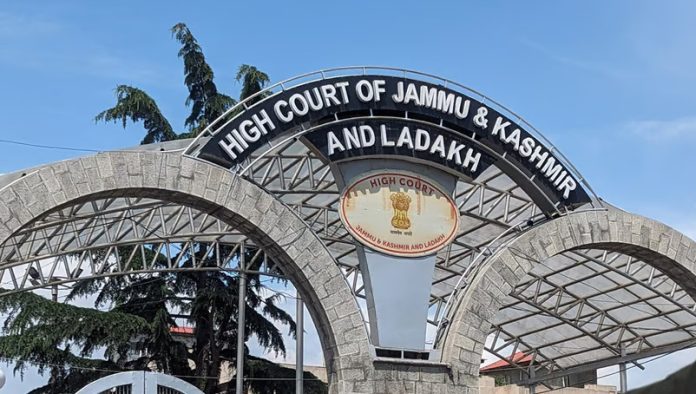S.U. Khan, J.@mdashAt the time of hearing no one appeared on behalf of contesting respondents, hence only the arguments of learned Counsel for the petitioner were heard.
2. This is landlord''s writ petition arising out of eviction/release proceedings initiated by him against tenant respondent No. 3, Hakeem Ziaul Rahman on the ground of bona fide need u/s 21 of U.P. Urban Buildings (Regulation of Letting, Rent and Eviction) Act, 1972. Landlord petitioner impleaded his real brother Jewan Lal Agarwal, respondent No. 4 as proforma opposite party in the release application, which was registered as Misc. Case No. 1 of 1990. Prescribed Authority/Munsif (West), Ballia allowed the release application through judgment and order dated 6.5.1994. Against the said judgment and order, tenant respondent No. 3 filed R.C. Appeal No. 5 of 1994. which was allowed by District Judge, Ballia on 31.7.1995 and judgment and order passed by the prescribed authority was set aside. This writ petition is directed against appellate court order dated 31.7.1995.
3. Property in dispute is described in the release application as a shop. Rent is Rs. 13.75 per month. Landlord petitioner stated that in family partition dated 12.1.1987, property had fallen in his share and his brother Jewan Lal Agarwal opposite party No. 2 had no concern with the shop in dispute that tenant was doing medical practice in Unani medicine and business of selling Unani medicines from the shop in dispute since 1956 and that landlord required the shop for settling his son Rajendra in the business of selling cloths.
4. Tenant Hakeem Ziaul Rahman pleaded that he took the accommodation in dispute, which was a house, for residential purpose and as he was Hakeem (i.e., practising in Unani medicine system), hence only in the outer verandah he prescribed the medicines for the patients and in the adjoining kothari kept medicines. It was further pleaded by the tenant that landlord was having a big shop in Sadar Bazar, which was being run by his sons.
5. It may be mentioned that in the first instance, release application was allowed on 14.1.1992, however on appeal the said judgment was reversed through order dated 21.7.1992 and matter was remanded. After remand, release application was again allowed on 6.5.1994.
6. The matter was remanded to consider two points. Firstly, whether accommodation in dispute was residential or commercial and secondly, whether landlord really intended to establish his son in cloth business or not ?
7. By virtue of third proviso to Section 21 of the Act, no release application shall be entertained in the case of any residential building or accommodation for business purposes.
8. The appellate court held that in the partition deed in between petitioner and his real brother Jewan Lai, copy of which was filed by the landlord petitioner himself, property in dispute was shown as a house.
9. It appears that landlord had filed two partition deeds, one of 1956 and the other of 12.1.1987. Nagarpalika records were also filed to show that house was in occupation of Hakeem Ziaul Rahman.
10. It was also argued on behalf of tenant that in the original release application in Para 3, property in dispute was described as house, however in the earlier appeal the said assertion was got amended by filing amendment application.
11. In the earlier appeal, a commission was issued to inspect the property in dispute. Commissioner submitted report, which is paper No. 66.
12. On behalf of landlord, reliance was placed upon some objection filed by the tenant before R.C. & E.O. on 28.10.1959 in which he stated that the property in dispute was a shop and it was further stated that from the said accommodation, he was carrying on medical practice. Reliance was also placed upon the order of R.C. & E.O. dated 12.11.1959 allotting the accommodation in dispute in favour of the tenant Hakeem Ziaul Rahman in which it was mentioned that the applicant had stated that he wanted to establish medical store in the property in dispute.
13. The appellate court held that the property in dispute was let out for residential purposes, hence by virtue of Proviso III to Section 21 of the Act, it could not be released for commercial purposes. However, in the last paragraph, appellate court held that the need of the landlord was bona fide and he would suffer greater hardship.
14. In para 16 of the written statement, the tenant stated that he was doing practice of Unani medicines and he was getting patients from other cities also, hence he had a lot of goodwill from the house in dispute and he invested lacs of rupees in establishing his practice and storing medicines in the house in dispute and in case he is evicted from the house in dispute, then his business and good-will would come to an end and his family would be on the verge of starvation. In para 17, it was stated that tenant''s family was also residing in the accommodation in dispute.
15. The prescribed authority, on the basis of objections filed by tenant Hakeem Ziaul Rahman before R.C. & E.O. in 1959 held that tenant was carrying on the profession of Unani medicine and in the said objection it was not mentioned that his family was also residing therein.
16. The tenant had emphasized that he was also manufacturing the medicines from the premises in dispute and medicines and manufacturing apparatus and equipments were of lacs of rupees. It clearly proves that at least predominant user of the property in dispute was non-residential. If the tenant had only writing the prescriptions for the patients, user could not become commercial. However, manufacturing medicines and giving them to the patients is certainly commercial purpose. A consultant doctor, but does not give medicines, who only prescribes the same and does not keep any instrument or apparatus at his place, cannot be said to use the premises for non-commercial purpose. Similarly in the case of an advocate, if in his residential house he keeps his chamber also and consults clients there it does not become commercial.
17. In
18. Moreover the Commissioner in his report as mentioned in the impugned judgment of the appellate court found only one kitchen in the accommodation in dispute which could indicate that some residential activity was either possible or was being carried out. The Commissioner did not report that anyone was residing or any room etc., was available for residence.
19. Accordingly, in my opinion, building in dispute was let out and was being used either exclusively for commercial purpose or at least predominant purpose was commercial and is being used exclusively or predominantly for commercial purposes. Accordingly, aforesaid Proviso III was not applicable.
20. Findings on the bona fide need and comparative hardship have been recorded in favour of the landlord by both the courts below. I do not find any error in the said findings. There was no assertion on behalf of tenant that the son of the landlord, for whose need release application was filed, was having any independent business. Mere fact that son was assisting his father in business is no ground to reject the release application vide
21. Accordingly, writ petition is allowed. Judgment and order of appellate court is set aside. Judgment and order passed by the trial court/ prescribed authority allowing the release application is restored.
22. However, as no one has appeared on behalf of tenants respondents, hence before issuing parvana dakhal/writ of possession on the execution application, which may be filed by the landlord u/s 23 of the Act in pursuance of this judgment, prescribed authority shall issue notice to the tenant respondent No. 3.
23. From today till actual eviction, tenant shall be liable to pay rent/damages for use and occupation @ Rs. 1,000 per month.

